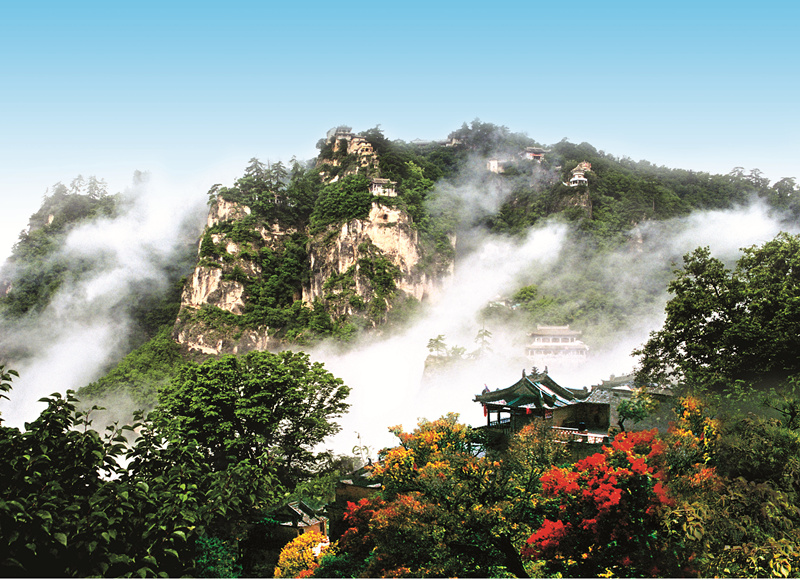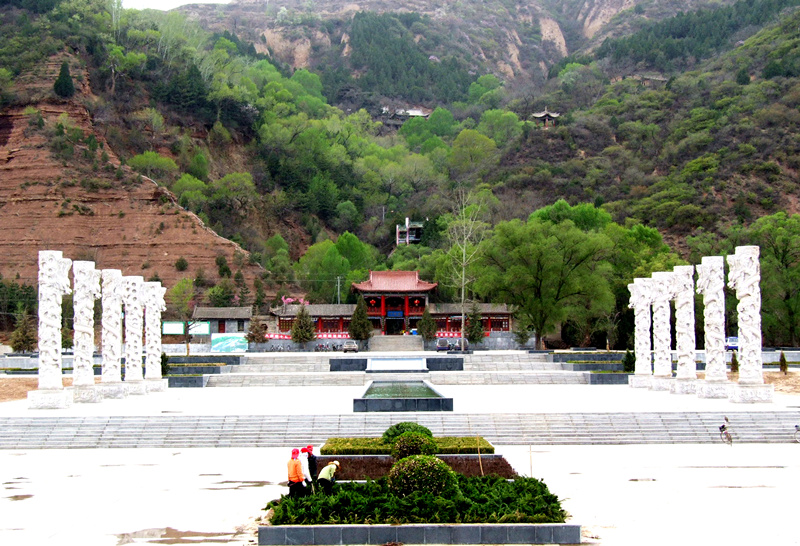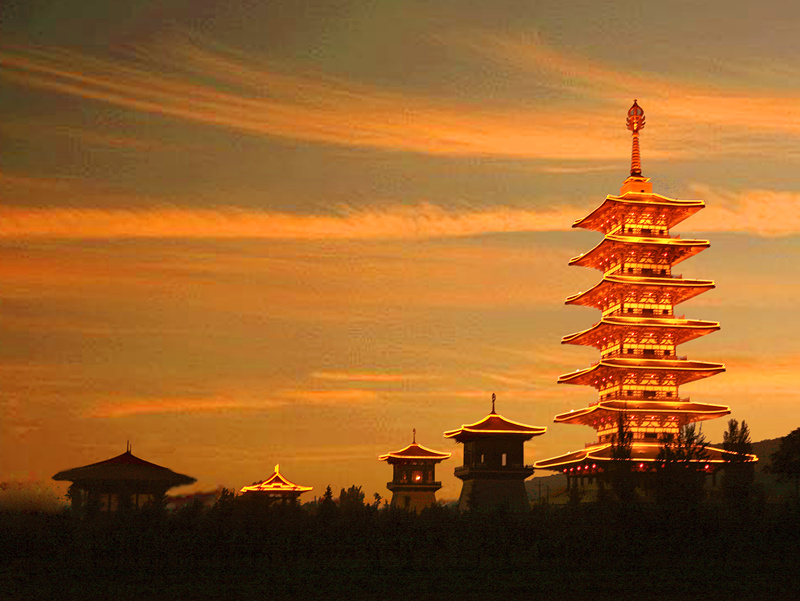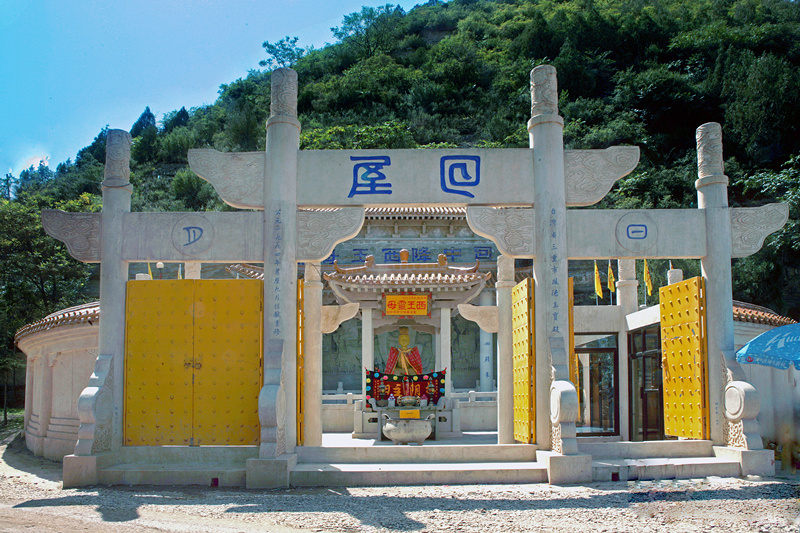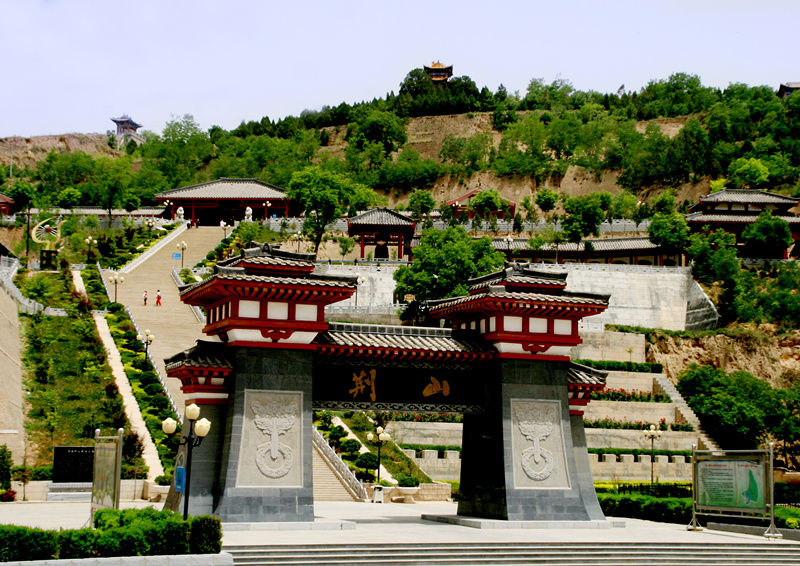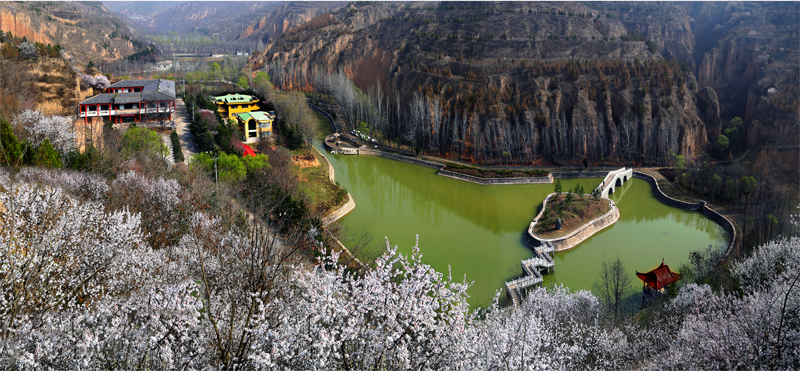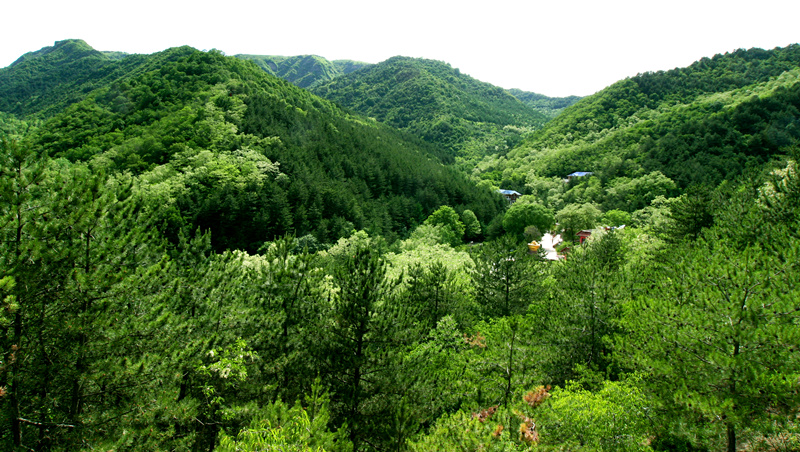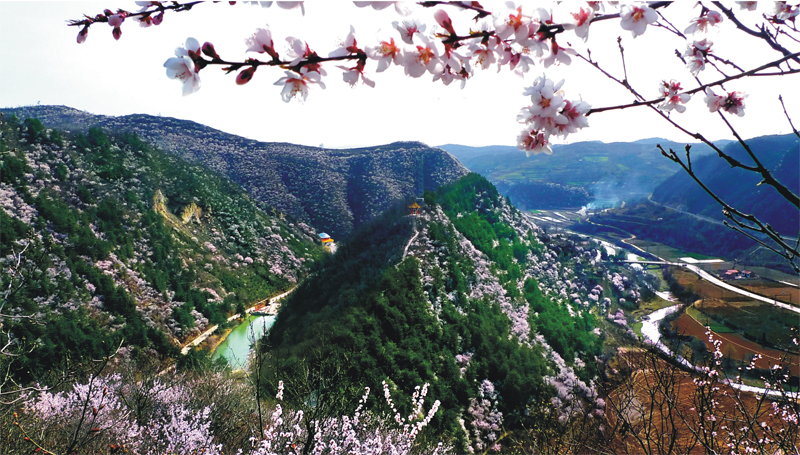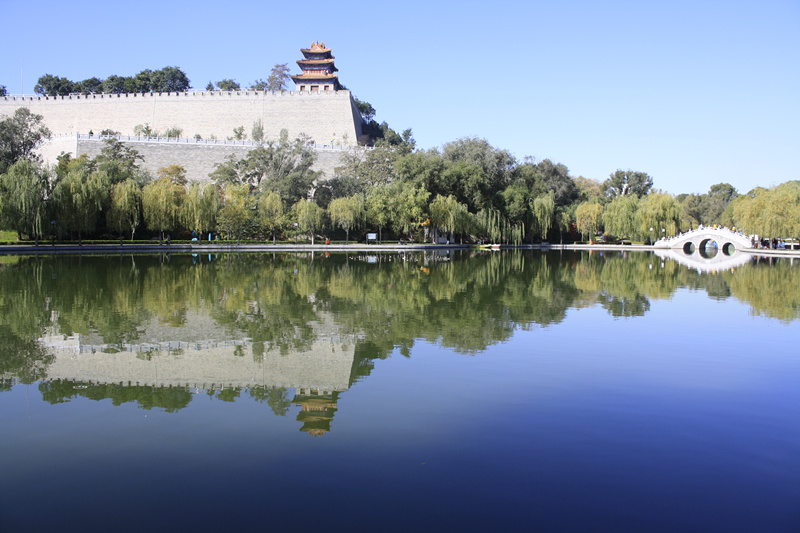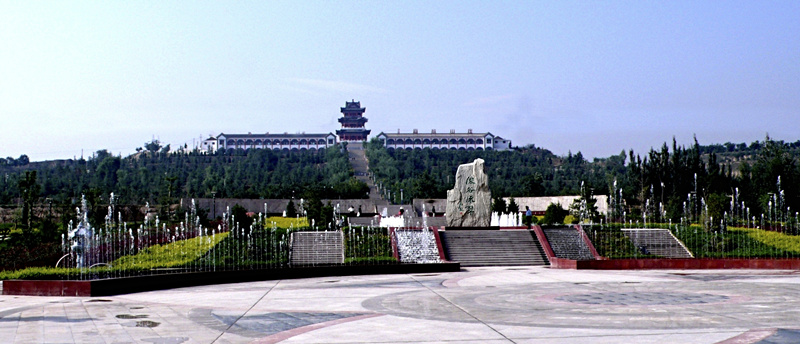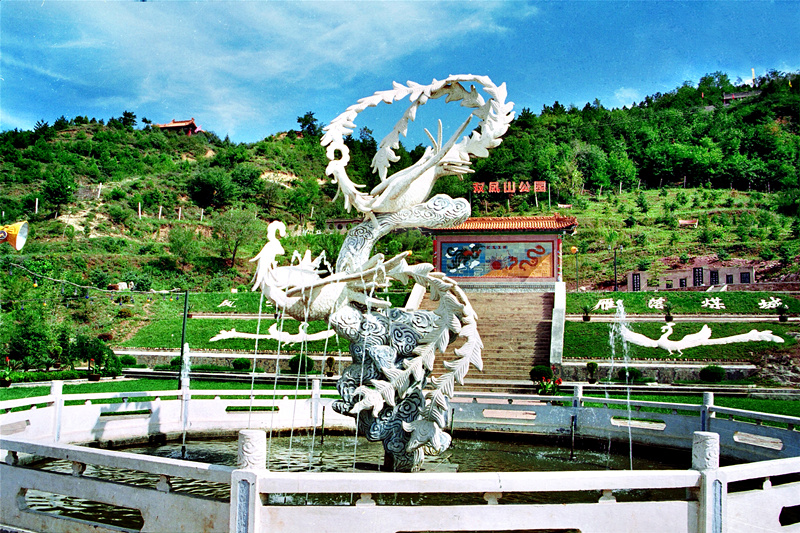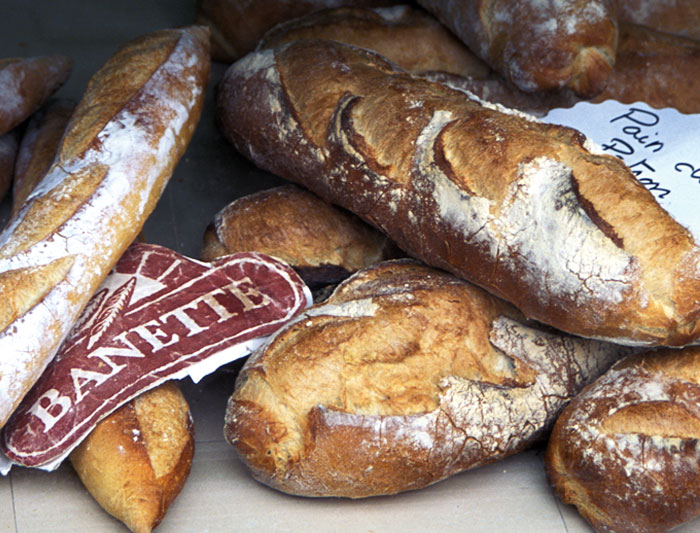Pingliang City
Pingliang City is located in the eastern part of Gansu Province, at the eastern foot of Mountain Liupanshan, and by the upper stream of Jinghe River. Pingliang is at the geometrical center of Shaanxi Province, Gansu Province and Ningxia Hui Autonomous Region. Pingliang City is called “the land dock of Gansu", as well as “the first city out of Chang’an to the west", an important town on the ancient Silk Road. The total area is 11,325 square kilometers, and the total population is 2.08 million. Under its jurisdiction, there are Kongtong District and six counties – Jingchuan, Lingtai, Chongxin, Huating, Zhuanglang and Jingning. From ancient times, Pingliang City was a strategic junction controlling Sanqin (ancient name for Shaanxi) and Wuyuanjun County (in current Inner Mongolia). It was a gathering and distribution center of local products in East Gansu, and a strategic point and communication hub on the way from Central China (comprised of the middle and lower reaches of the Huanghe River) to the Near East Asia and the east end of the north line of the ancient Silk Road. It is a highway hub of the Northwest and an important transit station of the second line of the Eurasia Land Bridge. Enjoying a long history and profound culture, Pingliang is the birthplace of the civilization along the upper and middle reaches of the Yellow River, and one of the important cradles of the Chinese nation. As early as 200 thousand to 300 thousand years ago, the ancestors of human beings lived on this land. More than 3000 years ago, ancestors of the Zhou Dynasty created advanced farming culture in the Jinghe River Basin, and opened the dawn of agricultural civilization. In 358 A.D., Fu Jian, the King of The Former Qin (351-394), polished weapons and fed horses here, intending to pacify State Qianliang, and then began to establish the county with the name of Pingliang. There are 2,257 cultural relics of different periods including Yangshao, Qijia, Shangzhou and so on, 5 Major Historical and Cultural Sites Protected at the National Level, 69 provincial-level Major Historical and Cultural Sites, and more than 30 thousand cultural antique items, among which 199 pieces are grade-one cultural relics of the state. “The Buddha relics in gold and silver inner and outer coffins" were unearthed in Dayun Temple of Jingchuan County; the bronzeware of the Western Zhou Dynasty and Money Yinhezi of the Southern Song Dynasty were found in Lingtai County. These cultural relics and antiques are honored as “the best cultural relics of China". There are many historical cultural relics, especially the premiere mountain of Chinese Taoism - Kongtong Mountain - and the birthplace of the first ancestor Fu Xi, God of Fishing and Husbandry -- Ancient Chengji Town. Also famous are the first palace of the Queen Mother of the West -- Huizhong Palace, the first platform of spiritual sacrifices in the Divine Land -- Ancient Altar (Lingtai), and the first altar where the Heaven Worshipping ceremony was held by the First Emperor of Qin -- Lotus Platform. In its long history, many historical figures set foot here, and many profoundly influential and important events happened here. The legendary Yellow Emperor, who is the Primogenitor of Chinese civilization, visited Kongtong Mountain himself to ask the immortal Guangchengzi for advice on how to cultivate people’s moral characters and manage the affairs of the country. The King Mu of the Zhou Dynasty led “Eight horses to run 15 thousand km a day" to meet with the Queen Mother of the West in Huizhong Palace. In history, both the First Emperor of Qin and Emperor Wu of the Han Dynasty patrolled the west, and climbed Kongtong Mountain to enjoy the beautiful view and sought the kingcraft of managing state affairs. The Prince of Qin, Li Shimin won a great victory in Jingzhou, showed his great talent and returned triumphantly. Li Bai and Du Fu loved Kongtong and left many masterpieces to the world. Genghis Khan was stationed in Bilong Mountain and built an imperial resting palace there. Lord Han in the Ming Dynasty governed Pingliang for 11 generations. The famous Taoist Master Zhang Sanfeng frequented Kongtong and practiced Taoism here for 5 years. In modern times, Zuo Zongtang, Lin Zexu, Tan Sitong, Feng Yuxiang, Zhang Xueliang, and Yu Youren, among other patriots, have come in a continuous stream and left their imprint in history. Mao Zedong led the Chinese Workers’ and Peasants’ Red Army to Pingliang and spread the spirit of revolution. Pingliang, recognized as a blessed land, has also bred many world-renowned historical celebrities, such as Huangfu Mi, the founder of Chinese acupuncture, Niu Sengru, distinguished politician and litterateur in the Tang Dynasty, Wu Jie, Wu Lin and Liu Qi, great generals against the invasion of State Jin in the Southern Song Dynasty, Zhao Shichun, one of the “Eight gifted youths in Jiajing" in the Ming Dynasty, and Mu Tianyan, famous official in the early Qing Dynasty and so on. After years of exploration and development, Pingliang has now developed 4 major “cultural cards", which possess stronger attractions and greater influences, including Kongtong Mountain, the Queen Mother of the West, Dayun Temple and Huangfu Mi. The novel combination of profound cultural treasure and modern civilization makes this land full of anima and charm, forming the plural, heavy, inclusive and open regional cultural characteristics. Kongtong Mountain Scenic Area ( AAAAA)
Kongtong Mountain is located twelve kilometers west of Pingliang City in Gansu Province. With an altitude of 2123 meters, the landscape is typical of Danxia landform. It has long been known for The Kongtong Kungfu, developed locally, along with Shaolin, Wudang, Emei and Kunlun are called the five great martial arts in China. Writer Jin Yong offered his inscription for the First Kongtong Kungfu Festival in Pingliang, “Kongtong Kungfu, powerfully dominating western China." There is natural scenery in Kongtong Mountain, which combines the characteristics of “magnificence of the north" and “the delicateness of the southern China". It is honored as a dazzling pearl in the Loess Plateau of Longdong. With marvelous and exquisite natural scenery and quaint, consummate culture, this place has values for tourism, cultural exploration and scientific investigation. Yunya Temple of Zhuanglang County (AAAA)
Yunya Temple, located 35km east of Zhuanglang County of Pinglang City, Gansu Province, is a 1600-year-old grotto temple. In the depth of the Guanshan Mountain, it is renowned for its grotto statue art and as a National Forest Park. The scenic area stretches like a belt; from east to west, the width is 13.75km and from south to north, the length reaches 32.25km. The scenic area features mountains, water Drangon Spring Temple/Longquan Temple of Chongxin County (AAAA)
Built on the side of Mount Fengshan, Dragon Spring Temple is about 2km north of Chongxin County, Pingliang City with an altitude of 1215 meters. The water seeping from the mountain rocks forms two springs, one is named Nonglu Spring, and the other Guanzhu Spring. On the steep side where Guanzhu Spring flows down there grows a thousand-year-old cypress, resembling a flying dragon (in Chinese “Long") and harmonizing with the spring (in Chinese “quan"), hence the Temple’s name Longquan. The Dragon Spring Temple is typical of a low mountain and ravine landscape where there are green mountains, crystal-clear spring water, towering cypresses as well as shaded forests, demonstrating both the exquisite natural beauty unique in Southern China and a typical landscape in Loess Plateau. The spring stream flows all year around. The scenic area is renowned as a “nature-gifted bonsai garden" of eastern Gansu Province for its value in sightseeing, and cultural and scientific exploration. There are abundant natural resources for tourism development unique in Loess Plateau, namely the mountain springs, the cypresses over a thousand years old and the marvelous rainbow over the springs, as well as the profound cultural heritage represented by the ancient Qijia Cultural Relic and farming culture in eastern Gansu Province. They all contribute to make it a Historical and Cultural Site Protected at the provincial level, attracting numerous tourists for sightseeing. Dayun Temple and The Queen Mother’s Palace of Jingchuan County (AAAA)
Located on Huishan Mountain, half a kilometer west of Jingchuan County, Gansu Province, the Queen Mother’s Palace (Wangmugong) is one of the most famous Taoist temples in northwestern China. Legend tells that two devout Taoists, King Mu of the Zhou Dynasty and Emperor Wu of the Han Dynasty, once traveled here, and were respectively wined and dined by the Queen Mother of the West, the supreme Goddess in Taoism. The Goddess Palace of Jingchuan County was initially constructed in the Yuanfeng period of Emperor Wu's reign in the Western Han Dynasty. It was rebuilt twice in its history, once in the early Song Dynasty and the other in the Era of Jiajing (1522-1566) of the Ming Dynasty. It was destroyed in war in 1864. The buildings we now see were rebuilt in 1992. There are West Goddess Hall, East God Hall and terraced halls. The Stela of Ode to the Goddess, “The gem of all steles", is the most famous one among the large collection of steles in the Goddess Palace. There are four main scenic spots in the scenic area: the Goddess Palace (Wangmugong), the Shining Lake, Huiwu Palace and the Grottoes. Legend has it that Wangmugong is the place where the Queen Mother of the West was born and brought up, and where her ancestral temple was located. A grand celebration is held every year on the 20th of March of the lunar calendar. Huge crowds of people come to pay homage, leaving the air filled with the smell of incense. Ancient Sacrificial Altar of Lingtai County (AAAA), Jinshan Forest Park (AAAA)
The Ancient Lingtai, or the Ancient Sacrificial Altar is located in Lingtai County of Pingliang City. In the 11th century BC, while King Shangzhou of Shang Dynasty was reigning, King Wen of the Zhou Dynasty conquered a kingdom named Mixu, which is in present-day Baili Township of Lingtai county. To worship Heaven and hold celebrations with his people, he built the Sacrificial Altar. In the Tang Dynasty, Lingtai was used as the county’s name. The original Lingtai was facing south, and the foundation was built with rammed earth. The altar has been destroyed twice and was rebuilt in 1933. The reconstructed altar was 12.3 meters high with a 12.3 meter-wide-base, reinforced with bricks outside. It was divided into two storys, with an Arbor of Eight Diagrams built on top of it, in which a statue of King Wen of Zhou Dynasty was consecrated. A legend has it that when the altar was about to be completed, two red-crowned cranes flew over from the east, circled round the altar for three days on end, and perched on an old cypress in the Temple of King Wen. This was considered auspicious, making the whole town go wild with joy. Now the site of the old sacrificial altar, facing south, is 33 meters high with a base 18 meters wide. It has three stories. Inside the Hall on the top storey there is a statue of King Wen of the Zhou Dynasty. On the wall are large-scale frescoes that recapture the magnificent scene of conquering the Kingdom of Mixu. In the winding corridor at the bottom is a forest of steles collecting over 260 pieces of inscriptions and inscribed boards by ancient and modern celebrities. For its long history and far-reaching cultural influence, the altar enjoys a good reputation of “No.1 Sacrificial Altar in China". Tianjiagou Ecological Scenic Area of Jingchuan County (AAAA)
Tianjiagou Ecological Scenic Area in Jingchuan County, is 3km from the County and equidistant from the Queen Mother’s Palace (Wangmugong). With a total area of 49.7 square kilometres, the core area covers 5 square kilometers, conveniently connected with the 312 National Road. It is a natural landscape and a leisure resort for vacations. There are mandarin ducks, cranes, and deer, which take visitors back to the beauty of nature. By the pond and the water park with an area of 31,000 square meters, there are a reception center, shops, and recreational space, covering an area of 5400 square meters. Tianjiagou Ecological Scenic Area has the rich cultural essence and ecological surroundings so that the visitors can get leisure and regimen here. Also, this area serves as a platform for soil-testing and water conservation, and for technical exchanges and science-technology promotion, displaying the efforts invested and the achievements in eco-system construction made by Jingchuan County. Taitong Forest Park in Pingliang (AAA)
Taitong Forest Park is located within Kongtong National Nature Reserve, 9 kilometers away from Pingliang city. It is to the west of Kongtong Mountain, covering an area of 14,467 hectares. The elevation of the peak of Taitong Mountain is 2,234 meters. There are Taibai Temple, Buddha Temple, the Five Dragons Temple and the Heavenly Bridge, grottoes, etc., which are honored as a Taoist “Green Holy Land". Turning from rain to sunlit day in summer, clouds and fog rise into the sky, like giant mushrooms, lingering and haunting the mountain peaks. This has been acclaimed as “Taitong Cloud Clusters" since long ago, as one of the eight Pingliang scenes. As a natural “flora and fauna park", the forest coverage rate is more than 70%. There are more than 90 kinds of wooded plants from 33 families, 3000 kinds of herbs, and 20 species of fungi. There are also leopard, deer, roe deer, musk deer, pheasant and other 30 species wild animals of national priority protection. Taitong Manor at the foot of the mountain, covering 1000 hectares, is a tourist attraction that combines natural beauty and ethnic styles. Huating Lotus Lake Resort (AAA)
Lianhuatai (Lotus Platform) is located in the midst of forest mountains, 35km west of Huating County. The altitude is from 1520 meters to 2764 meters. According to the ancient legend, it was the place where emperors worshiped Heaven. In 1995, it was approved by the provincial government as a provincial forest park. It is the tourist attraction of primeval, natural landscape, compatible with Taoist cultural spots. The protected area covers 118.8 square kilometers. Tourists will find themselves in a wonderland -- the peaks and ridges, the deep rocks and cliffs, the singing birds and the beautiful scenery, the diversity of animals and plants with 400 varieties in 7 major categories. It is known as an amazing zoo and botanical garden on the Loess Plateau. There are the numerous cultural relics including 2 sites of ancient copper mines (exploited by General Yuchi Jingde in the Tang dynasty), 2 sites of Ancient Plank Path, 21 sites of stone-carvings, 20 statues of Buddha and many temples. Besides these, it also has the five ancient temples of Shangsi Temple (Buddhism) and Xiasi Temple (Taoism) established by Qin Zaiyong. The Mountain Qinglongshan Inscription is the best evidence for historical archaeology. The most fascinating scenery is the surrounding area of the isolated and towering Lianhuatai (Lotus Platform). It is a rare scene in Gansu, the magnificent mountains covered with luxuriant trees, the incessant bird-singings in the silent valley, the vivid stone cliffs showing different poses, the lingering clouds and mists from the valley, and the scented flowers, the clear river flowing. All these make it a great tourist attraction in the western region of China. The main scenic spots of Lianhuatai are the Herbal Medicinal Cottage, Silent-valley Maze, the Honorific Arch over the gateway, King Tower and Qinglong Lake, Secluded-turtle Peak and Hidden-tiger Cliff, Mushroom Cliff and Buddha Head, Ghost-guard Bridge, Immortal Bridge, the Statue of Water-siphoning Elephant and so forth. All of them embody the character of the landscape. The natural and cultural scenes are adding radiance to each other. Lianhuatai is known around the world for its supreme natural landscape and numerous historical relics . Since ancient times, poets and scholars have come in flocks to appreciate the charms and spirits of the immortals and the essence of the oriental culture of Taoism. In the course of a thousand years, the abundant Taoist culture has been elevated. Taoist temples and cultural resorts are well preserved. There are ancient heritage sites, steles, stone-carvings and statues, classical books and other cultural matters. There are rich historical mysteries in Taoist culture, attracting people to research and decode. Mijiagou Ecological Scenic Area of Huating County (AAA)
Mijiagou Ecological Scenic Area lies west of Dongxia Forest Farm, 5km from Huating County. Huaji Road conveniently connects it with the outside world. The altitude of the scenic area is 1600 meters, and the mean temperature is 7-8 degrees Celsius. With thick vegetation in the valleys and on the mountains, the natural views are spectacular. In spring, the peach blossoms in full bloom paint the mountains pink. In summer, the lush greenery provides tourists a cool shelter from the sun. In late autumn, the reddened forest changes the mountain all over. In winter, the snow-capped mountains are more dazzling than ever. It turns into a foggy mirage after a rain, as the mountains would hide themselves behind the haze. On sunny days, the park is alive with the songs of birds and the chirpings of cicadas. Looking at the small bridge over the brook, the tourists would find themselves in a heavenly secluded world. Various Mongolian yurts and leisure houses are scattered across the green landscape, and tree lined trails can lead tourists up to the mountaintops. Standing at the peak of the mountain where a six-cornered pavilion stands, tourists can get a panoramic view of the mountains and the river in the distance. The hill sides are dotted with FRP smart audio devices. The artificial lake is like a mirror at the foot of the mountain. The suspension bridge, with a span of 32 meters, stretches in the sky,. Here the accommodation facilities offer tourists various options: simple or elegant Loess caves, luxurious villas, a dining center with a multifunctional open-air platform, as well as a Mongolia yurt with a diameter of 18 meters. Liuhu Park of Pingliang City (AAA)
Liuhu Park lies at the northwest boundary of the Kongtong City premises, by the south of the Xian-Lanzhou Road. The park stretches 480 meters from east to west, and 185 meters from north to south. Its total area is 8.87 hectares, with the lake area being 2.73 hectares. Liuhu Park has a unique landscape of “willows growing and reflected in the lake". Roaming along the flagstone path, tourists find themselves in an exquisite painting: painted boats on the lake, garden by the pavilions, and willows in the water. In late spring, willow catkin fly all over the lake; this spectacle is known as the “Summer Snow on Willow Lake", and is one of the eight scenes in Pingliang. The park’s whole terrain descends from west to east. The southern part slopes steadily down while the north is a level land. The lakes in the area have quite a number of spring mouths (so-called 100 springs) spewing constantly underneath. The West Lake is 1.5 meters deep; the East Lake’s depth is 2-3 meters. Among all the springs, Warm Spring is long renowned. Nanshan Ecological Park of Kongtong District (AAA)
Nanshan Ecological Park is located near Yuantong Temple Road in the Kongtong District of Pingliang City. It is a “green barrier", protecting the south of Pingliang. This park covers an area of 22 hectares. The park was built under the guidelines of making full use of the natural ecological resources, and closely combining the Kongtong cultural and historical arts. The park has the Garden Square, music fountains, walls of cultural reliefs, the landmark “Black Crane Tower" and other attractions. There is one experienced-based recreational orchard, and a botanical complex of Magnolia Garden, Cherry Garden, Lilac Garden, Ginkgo Garden, Peony Garden, Bamboo Garden and Chrysanthemum Garden, for the appreciation of rare flowers and ornamental plants. They have become the best place for the citizens’ leisure and regimen. Adjacent to the Yuantong Temple, the chanting voices can be heard from time to time, added a trace of ancient Zen to the park. Chengji Cultural Complex of Jingning County (AAA)
Chengji Cultural Complex covers an area of 4.4 hectares, having a building area of 18,000 square meters, with Fuxi Palace as the main building. The overall architectural style is a blend of Qin and Han Dynasties, magnificent and elegant. Fuxi Memorial Hall is located in the central floor of Fuxi Palace, and there are displayed his statue, portraits, ceiling paintings of ancient maps of rivers and mountains, murals on Fuxi’s legends and heroic deeds, as well as other furnishings, ritual tools and instruments. The East and West annexes are museums of historical figures that were related to this place. The Tourists’ Center, the Altar of the Eight Diagrams and the Corridor of Steles are in the south court of the complex. Jingning County (Ancient Chengji) is the birthplace of Fuxi, the first ancestor of the Chinese nation. Legend has it that Fuxi was not born until after his mother Huaxu Shi had been pregnant for 12 years. The ancient Chinese timekeeping took a 12-year-period as a “ji". To commemorate this, Chengji was named for today’s Jingning County. To promote the traditional culture, the local government invited famous Chinese architect, Mr. Ren Zhenying and senior architect Mr. Zuo Guobao, to design and construct Chengji Cultural Complex. It has become the shrine for Chinese pilgrims at home and abroad. Double Phoenix Mountain Park in Huating(AAA)
Double Phoenix Mountain is located in the south of Huating County. The mountain looks from afar like two phoenixes soaring up from its peak. The park has the original artificial pine forest, and ginkgo, junipers, cherry, purple hibiscus and other valuable landscape trees are constantly being planted. Against the natural scenery, Buddhist temples and Taoist temples give the tourist area very prominent humanitarian temperament. The winding Rui River twists and turns before the mountain, and a long dam was built to form a hydro-recreational area of the 26,600 square meters. The colorful reflections of the beautiful shining lights in the water add radiance to the park. The park has kept expanding and now it has six sections -- the park square, children’s play ground, amusement park, riverside leisure area, mountain sightseeing area, and the Buddhist culture area. This traditional scenic spot has increasingly gained more modern color. |
Pingliang City
December 21, 2016
VIEWED: 0
Recommended Products
see all-
Paris to Marrakech
HKD 6415 + Book -
Spain, Portugal & Morocco
HKD 3645 + Book
